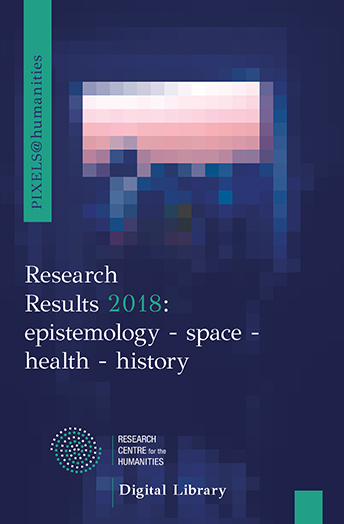Summary of the Research Proposal
The proposed historical research attempts an alternative historiography of modern Greek architecture.It focuses on the period 1945-1967 during which, as it is generally believed, architecture in Greece lost its ability to address to the masses and to the question of mass housing, and urban planning proved powerless to impose its goals. Urbanization and urban housing entered an “automatic urbanization” regime where it seemed that space planning experts were playing a minor role.
This research’s central hypothesis is to critically review this role attributed to the “experts” of space in Greece, focusing on two influential architects-planners, who in the critical period under study were additionally public officials, namely Constatinos Doxiadis and Prokopis Vassiliadis. Doxiadis was one of the basic figures of Reconstruction (first as vice-minister as Deputy Minister and General Director and then as Coordinator of Reconstruction, and Deputy Minister of the Ministry of Coordination). Vassiliadis in essence follows Doxiadis (after the dissolution of the Ministry of Housing and Reconstruction into the Ministries of Public Transportation for one and Public Works for the other, on 1954) for the issues of public housing (at the Directory of Studies of the Housing Service of the Ministry of Public Works). On the one hand Doxiadis is said to be responsible for the 28th Resolution (for he publicly supported it vigorously), which is considered that it has created favorable conditions for private-led building construction, and on the other hand, Prokopis Vassiliadis seems to have played a certain role –as the research claims based on specific findings–, into the introduction of building coefficients (which are a factor for surplus value in the Greek model of automatic urbanization). The policy of self-help in housing, followed by Doxiadis to resolve the extraordinary and widespread housing problems mainly of the Greek rural population, which seems to be into the spirit of broader geopolitical housing strategies, will be of particular importance for the research. Characteristically, as the survey reveals, when in 1955, Jacob Crane, who, more than anyone else, shaped and implemented the US policy for housing assistance and who had close contacts with Doxiadis, was asked by the National Mortgage Bank of Greece to express views on the housing problem of the country, he viewed the Greek model of the reconstruction of private homes as a real phenomenon and suggested its continuation.
Contributing to a more general historiographical shift concerning the study of the history of architecture, one that has begun to be interested in objects that traditionally have been classified as non-architectural, and in the role of architect as a consultant-specialist in a global network of intercultural collaborations (and not just as a creator-designer), this research aspires to highlight the historical role of architecture in the emergence of systems that operate autonomously, separately from architecture, and yet they are can define it. By studying original archives, largely unexplored in existing literature, the research attempts to understand modern architecture in Greece as interwoving with other much wider cultural manifestations and decisions that do not solely deal with the physical design of space.
This research project was funded by the Research Centre for the Humanities (RCH), with the support of

To view the conference’s program in Greek, click here.
The research results of the program “Towards an alternative historiography of (modern Greek) architecture, 1945-67”, by Konstantina Kalfa
have been published in Greek by RCH Digital Library, as part of the journal PIXELS@humanities,
in the volume Research Results 2018: epistemology – space – health – history.
Read the article in Greek here.

Konstantina Kalfa is an architectural historian, originally trained as an architect at National Technical University of Athens (2008). She holds a postgraduate degree in the history, theory and philosophy of architectural design (NTUA, 2011) and a PhD in History and Critique architecture (NTUA, 2015). Since 2012 she teaches History and Theory of Architecture at the University of Cyprus, the University of Thessaly and the Athens School of Fine Arts. Amidst her publications are ‘Where the Spell is Chanted’, Architecture and Culture 3:3 (2015), pp. 315-325 and ‘On Creatively Destructing’, Rethinking Marxism 26: 4 (2014), pp. 581-591. Since August 2017 she is participating at The Aggregate Architectural History Collaborative’s project Systems and the South: Architecture in Development.
- Κalfa, Κ, M Papavasileiou (2018-pending publication), ‘La maison de Iannis Xenakis pour F.B. Mâche à Amorgos: une réalisation par correspondance’. In Paris-Athènes 1945-1975, Le double voyage. Athens: École Française d’Athènes.
- Κalfa, Κ (2016) ‘Ο Choros ton Yatron: Iatrekes anafores ston choro (18os-19os aionas)’ [Doctors’ Space: Medical references on space from the beginnings of 18th century to mid-19th century]. In G Parmenidis (ed.) Research in Architecture: Architectural Design-Space-Culture (Annual Journal), 3: 518-537.
- Kalfa, K (2015) ‘Where the Spell is Chanted (Fallacies of Contemporary Architectural Discourses)’. Architecture and Culture, 3 (3): 315-325, DOI: 10.1080/20507828.2015.
- 1082055.
- Kalfa, K, P Pyla, and P Phokaides (2014) Treasured Microcosms: Cyprus in the Global Milieu, Circa 1960. Nicosia: Nicosia Municipal Arts Center (NiMAC).
- Kalfa, K (2014) ‘On Creatively Destructing’. Rethinking Marxism: A Journal of Economics, Culture & Society, 26 (4): 581-591, DOI: 10.1080/08935696.2014.947764.
- Kalfa, K (2012) ‘Visualizations of Athens. The Case of Kleanthis-Schaubert’s Plan’. In H Heynen & J Gosseye (ed.), Proceedings of the 2nd International Meeting of the European Architectural History Network, 121-125. Belgium: Contactforum.

